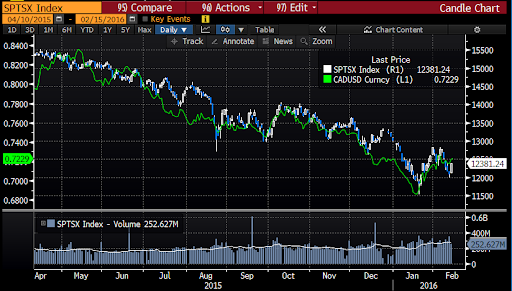January 9, 2019 – The typical Canadian investor has an equity portfolio of 50% Canadian stocks, 33% US stocks and the remaining international stocks.
For Canadians investing internationally, one factor to consider is whether to hedge the foreign currency exposure that comes with investing outside of Canada. Typically, Canadian investors’ largest foreign currency exposure would be the US dollar, so we’ll focus on that.
Like any product you buy in another country, you must exchange your local currency to the currency in which that product is priced. This is the same for stocks. When you buy a US security, you must sell your CAD and buy USD to purchase it. But now that you own a USD-denominated asset, you have exposure to the USDCAD exchange rate (ie. you are long the USD and short the CAD). You can either hedge this exposure by selling that amount of USD, or maintain this F/X exposure by doing nothing.
The key question is – does it make sense to hedge your currency exposure?
We believe the right answer is no, you should not hedge your foreign currency exposure for one reason:
- Risk reduction
Most investors’ primary concern with respect to investing is to not lose money.
The major benefit to not hedging your USD exposure is downside risk mitigation. In previous stock market declines, there has been a “flight to safety” – many investors buy US treasuries and sell foreign assets, pushing up the value of the US dollar. Therefore, the Canadian dollar tends to sink (and the US dollar rise) during stock market declines.
During the Global Financial Crisis, the TSX Composite declined -49.8% peak-to trough between June 2008 and March 2009. During this period, the Canadian dollar (CADUSD) declined -21.9% vs the US dollar. From a different perspective, the US dollar appreciated +27.9% during this period, so having this USD exposure would have cushioned the downside on your stocks. Over the same time period, the S&P 500 was down -49.6% in USD terms, but down -35.6% in CAD. Not hedging USD exposure would have mitigated pretty significant additional losses.

Source: Bloomberg
Looking at the bear market of 2015, the TSX Composite declined by -23.3% peak-to-trough and the Canadian dollar (CADUSD) declined -18% vs the US dollar. During this time period, the S&P 500 declined -3.9% in USD terms while the unhedged S&P 500 in CAD went up +6.7%. Again, holding US stocks unhedged would have mitigated this portfolio drawdown given the appreciation in the USD vs the CAD.

Source: Bloomberg
The other unique currency effect to consider supporting the “no currency hedging” argument is the notion that the Canadian dollar is a so-called “petrocurrency” (ie. it is correlated with the price of oil).
Typically, stock prices decline during recessions; As does the price of oil. The decline in the price of oil has the effect of pressuring the Canadian dollar to the downside, supporting our thesis that the Canadian dollar tends to decline in recessions and their accompanying bear markets.
Having USD exposure in your portfolio is really about managing the downside risk in your portfolio, which likely has a large contingent of Canadian stocks. As shown above, the USD tends to rise in value as your Canadian stocks decline, mitigating risk in your portfolio.
You have enough to worry about with your asset allocation and security selection. Don’t worry about your currency exposure too. Don’t hedge it.
-Julian



